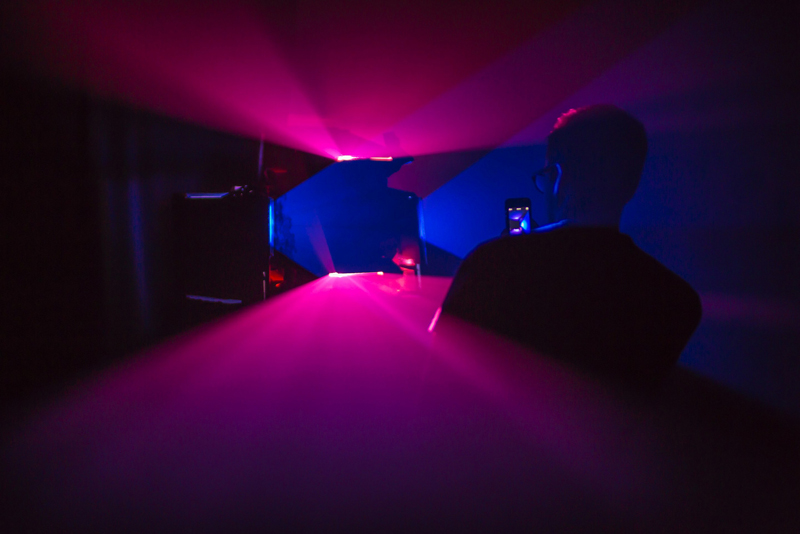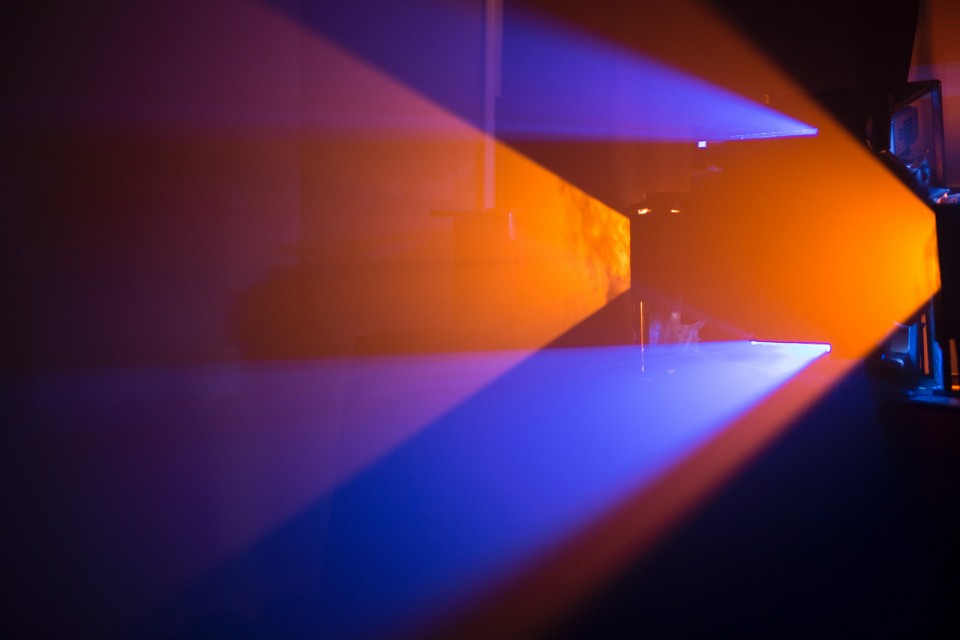It’s hard to do a light installation on Governors Island and not recall Anthony McCall’s monumental work, This World & Nearer Ones, 2009. While McCall’s work–and certainly James Turrell and others before him–use light to create virtually solid forms in space, with this piece I am interested in extending this notion by using light to create a form that conveys information. While the “information” being conveyed is of the most rudimentary sort–i.e., that of a specific shape–it represents the first step in a future series in which light itself becomes somehow informational.


Photos by Josh Reynolds
After growing up on Long Island, Eric Corriel graduated from Cornell University where he received a Bachelors of Arts in Philosophy while also studying Fine Art and Computer Science. He later received a Diplôme National d’Arts Plastiques (National Diploma of Fine Art), the equivalent of an MFA, focusing on Digital Art, from the École Régionale Supérieure d’Expression Plastique in Lille, France. Currently living in Brooklyn, Eric takes the urban landscape as a medium in which to create site-specific video installations in the public realm. He is also the Lead Web Designer and Developer for the School of Visual Arts in New York City.
For his artwork, Eric has been awarded by the New York Foundation of the Arts, New York Council for the Arts, and the Public Art Network. As a web designer and developer he has received awards from the Webbys, Davey Awards, and W3.
TJ Hospodar
I came to know Parallax during a misunderstanding while training in photography. Some cameras will exhibit inaccurate representation of an object due to any discrepancy between the plane of focus and that of the subject. This phenomenon has a similarity in its concern for movement, because the tilting and swinging of a bellows camera can lead to perspective correction. Allowing this confusion as a point of departure, my investigation of Governor’s Island was specifically focused on the infrastructure housing the Holocenter and how the shape of the projection room can distort the perspective of thrown light. This approach served to define the form of the project, whereas the content is an animation that considers movement in a way that doesn’t obscure the source subject as expected but instead in a way that results from programming and mapping. The found data serving as the source material deals with frailty and decay, relating more to the island than to optics or illusions.
About the artist
TJ Hospodar (b. 1977, Ohio) is a mathematician with an artistic practice. Based in New York, TJ focuses on information science, photography and performance to create objects, environments and circumstances. His particular interest in hospitality is evident in work regarding concepts of hotel theory, such as Hotel Savoy (PS122/Goethe Institut), Boardroom Bed & Breakfast (Open Center) and Boggsville Boatel (Flux Factory); of transportation, such as Commuter Assistance (The Work Office), Museum of Car Service and Mobile Library (PepeNero/GAP) planned for November; and of meal-sharing, such as Soup Kitchen (The Work Office), Foodworks (Sumei), Pierogi Party (3B) and ongoing exercises in Dinner Theatre with partner 0h10m1ke. His work has been mentioned in the New York Times and the BBC, and it has been exhibited in the United States, Germany, and planned for Italy in November.